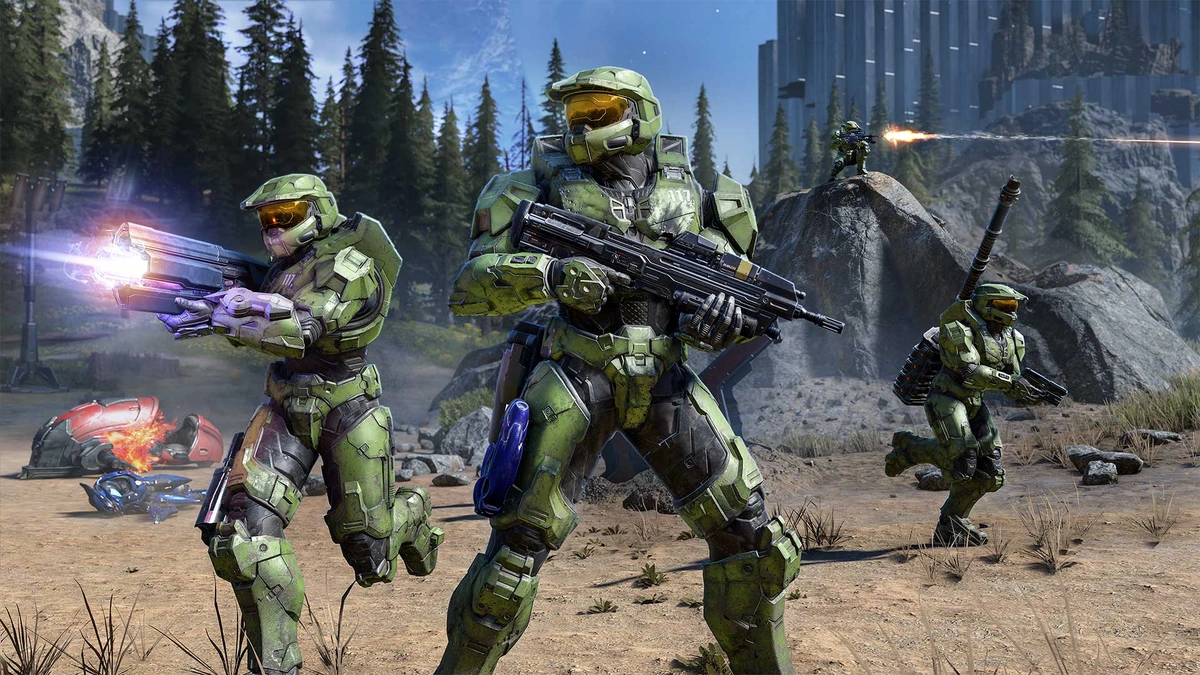Okay, let’s dive into the heart of the matter. The Halo community is buzzing – and not all in a good way. The latest iteration of the Halo campaign has sparked a debate, specifically around the Forerunner architecture. Some fans feel that the evolved design choices have, well, stripped away the original essence that made the Forerunner structures so iconic.
The Forerunner Aesthetic | What’s the Fuss?

But what exactly is the Forerunner aesthetic, and why does it matter so much? It’s more than just sleek lines and glowing panels. The Forerunner architecture represents a lost civilization of immense power and mystery. Think of the silent, imposing structures on Halo rings, or the labyrinthine complexes beneath the surface of Requiem. They evoke a sense of awe, history, and just a touch of the uncanny. The color palettes, the scale, the very feel of these spaces contributed to the unique atmosphere of the Halo universe. Players were drawn to this particular science fiction architecture . What fascinates me is the subtle story telling embedded in the level design that made us feel small in the face of unknown technology.
Now, let’s be honest, change is inevitable. Game developers are constantly striving to improve graphics, gameplay, and storytelling. But, and this is a big but, sometimes those changes can rub fans the wrong way, especially when it comes to core elements that define a franchise. And the Forerunner design? It’s pretty darn core.
Changes in Campaign Evolved | A Visual Shift
So, what are the specific changes that have riled up the Halo faithful? It appears that in ‘Campaign Evolved’, the Forerunner architecture has received a significant visual overhaul. Some sources say the metallic textures were completely changed. We’re talking about brighter color palettes, more intricate details, and a less monolithic feel. What I mean is , things feel, well, busier. While these changes might be visually appealing to some, others argue that they detract from the original sense of mystery and scale. The minimalist and silent environments are no longer that. We have now an explosion of sounds and flashy textures.
And it’s not just about aesthetics. Some fans feel that these changes impact gameplay as well. The original Forerunner structures were often designed to be disorienting and challenging to navigate. Their stark, geometric layouts forced players to rely on their wits and map awareness. With the new visual details, it’s been pointed out that the navigation has become easier, sacrificing the sense of exploration that defined the older titles.
Why This Matters | Preserving the Halo DNA
Why does this debate even matter? It’s just a game, right? Well, for many Halo fans, it’s more than that. Halo is a franchise with a rich history and a dedicated community. The Forerunner architecture is not just a backdrop; it’s an integral part of the Halo DNA. It’s the environment where iconic battles took place, where Master Chief made his mark, and where countless memories were forged. According toHalo’s Wikipedia page, the game’s unique art design has contributed to its legacy.
By altering these fundamental elements, some fans fear that the franchise is losing its way. It’s a question of respecting the source material while still evolving and innovating. The key, as with any artistic endeavor, is to strike a balance. It’s hard to say whether the changes are good or bad, since good and bad are subjective, but what can be objectively said is that the design has changed quite a bit from the source material.
The Future of Halo | Finding Common Ground
What does the future hold for the Halo franchise? Will the developers listen to the concerns of the fans and make adjustments to the Forerunner architecture? Only time will tell. But one thing is clear: the Halo community is passionate about preserving the essence of the franchise. The legacy of Halo is important, and it’s up to the developers to ensure that future installments honor that legacy while still pushing the boundaries of what’s possible. A common mistake I see people make is assuming developers are intentionally doing a bad job. Often times, developers are under pressure to provide new and interesting experiences, and they may go too far. So, let’s keep a critical eye . Here are the 3 common errors and exactly how to fix them in under 5 minutes.
The one thing you absolutely must double-check in the next game is the art design. Is it really worth sacrificing the original experience for a new, and potentially worse one?
In the end, the evolution of Halo is a balancing act. Change is good, and progress is necessary, but it’s crucial to retain the soul of what made Halo so special in the first place.
I initially thought this was straightforward, but then I realized the debate is more than just aesthetic. Let me rephrase that for clarity: there’s a deeper emotional connection fans have with the original game.
FAQ
Why are Forerunner designs important to Halo fans?
Forerunner architecture is a core part of Halo’s identity, representing a mysterious, powerful ancient civilization.
What specific changes are fans unhappy about?
Brighter color palettes, more intricate details, and a less monolithic feel are among the major issues fans have.
Do these changes impact gameplay?
Some fans believe the changes make navigation easier, sacrificing the sense of exploration.
What’s the main concern of Halo fans regarding these changes?
The main concern is that the franchise is losing its way and sacrificing its unique identity.




